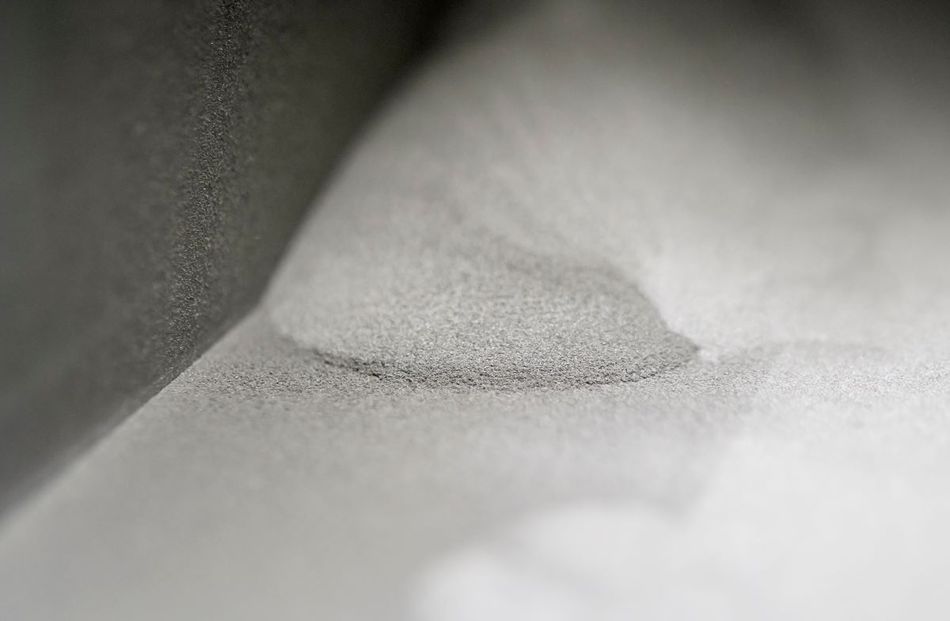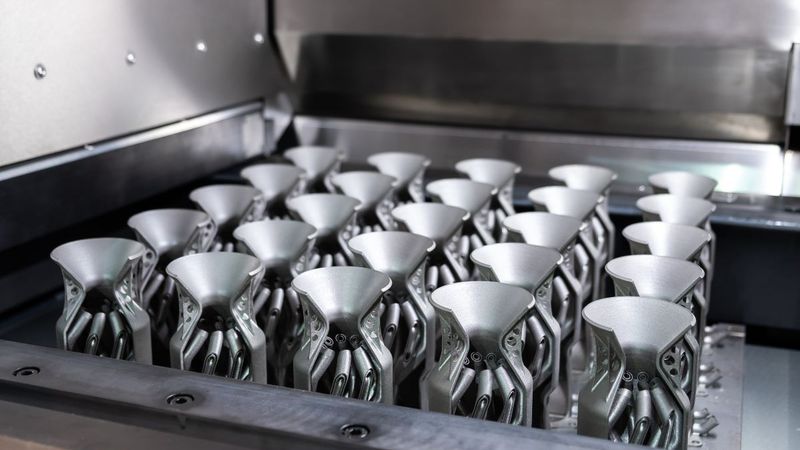The Metal 3D Printing Technology Report: Chapter 6: Challenges Facing Metal 3D Printing
In this chapter, we will explore some of the challenges facing metal additive manufacturing, how they are impacting the growth of the industry, and how metal AM industry players are addressing the issues.
Understand the Future of Metal 3D Printing
The Metal 3D Printing Technology Report is your essential guide to the latest advances, applications, and real-world insights into additive manufacturing with metal. Packed with detailed case studies, practical information, and interviews with industry leaders, this report reveals how metal 3D printing is transforming industries and pushing the boundaries of manufacturing.
Read the intro to the report here and an excerpt from chapter 6 below.
Complete this form and get your report in your inbox
Cost
One of the limiting factors associated with metal additive manufacturing technologies is the cost of the technology. While AM can offer cost benefits in specific cases, the overall cost of manufacturing metal parts using additive manufacturing compared to conventional production processes remains high. The cost is driven by a few factors, including the cost of hardware, the cost of materials, and the cost of post-processing.
Powder-based metal AM processes, such as LPBF and DED, require the highest capital expenditure, with industrial hardware costing in the range of $1 million. This is due to the complex nature of the process, requiring advanced energy sources, optics, powder management systems, and gas atmospheres. Metallic powder feedstocks are also costly, with a kilogram of metal powder costing anywhere from five to ten times more than the equivalent bar stock. While extrusion-based metal AM hardware and materials are substantially cheaper, the technology’s applications are currently more limited, and parts require more extensive post processing.
The high—sometimes prohibitive—cost associated with metal additive manufacturing is being addressed in different ways:
As adoption grows, economies of scale will increasingly come into play, particularly for metal consumables, as increased production volumes and shared resources will lead to lower costs across the supply chain.
Process optimization and further automation, particularly in metal post-processing, will improve efficiency, leading to faster production times and lower labor costs.
Emergence of industrial metal binder jetting systems is presenting a lower cost, yet scalable, production process, since the systems do not rely on complex optical systems and can use more readily available MIM powder as feedstock.
If the high cost of metal AM systems is a barrier to end users, manufacturing services provide an entry point, giving users access to industrial production processes without having to make a large initial capital expenditure.
 The high cost of powder materials remains a key challenge to the broader adoption of metal AM.
The high cost of powder materials remains a key challenge to the broader adoption of metal AM.
Consistency and Qualification
Metal additive manufacturing, while nearing its full industrial potential, is still burdened by challenges related to process consistency and qualification. There are many variables that come into play in the metal AM process, from part design and material, to type of manufacturing process, and process parameters. The ultimate aim of an industrialized metal AM technology is to be able to produce parts consistently and reproducibly, not only on a single machine but across different systems and at different production facilities. In short, it should be possible to produce a part with the exact dimensions and properties regardless of where or when the part is being printed. Achieving this reproducibility is vital to advancing the qualification of metal AM technologies and applications.
There are several avenues that will lead to greater process consistency, reproducibility, and ultimately qualification, such as:
Development and implementation of standard operating procedures (SOPs) across the metal AM workflow, from machine setup to material handling, to post-processing.
Integrating in-situ monitoring systems capable of detecting and fixing any inconsistencies or deviations in the process. Process data can also inform intelligent process optimization solutions to better predict and solve production problems that may occur.
The emergence of more accessible and scalable quality inspection processes for metal 3D printed parts, such as nonlinear resonance NDT.
Promoting industry collaborations to ensure best practices and SOPs are shared across various platforms for industry-wide consistency and repeatability.
The increased emergence of metal binder jetting is also driving greater scalability, as the technology is both more affordable and faster compared to metal powder bed fusion.
Scalability
Currently, metal additive manufacturing technologies are largely used for prototyping or low-volume production. While these offer benefits, the next frontier for metal AM, and 3D printing in general, is full-scale production. The current state of the industry must still overcome a number of technical hurdles in order to achieve full scalability. Hurdles related in part to the aforementioned issue of establishing greater reproducibility. That is, in order to scale up the production of metal 3D printed products, it must be possible to print identical parts (in terms of dimensions and properties) on multiple machines and, in many cases, at different production sites.
Reproducibility is a key challenge to scalability, however there are also other factors that must be addressed, including greater process automation, particularly for post-processing metal 3D prints. The current state of metal post-processing, which is largely reliant labor-intensive methods and multiple, time-consuming steps, is a bottleneck that inhibits metal AM scalability. Printing speed is another challenge to achieving higher throughputs, as is 3D printer build size. Establishing scalable quality control and inspection processes as well as reliable material properties across feedstock batches are also necessary for metal AM to truly attain scalable production volumes that can compete with more conventional metal production methods.
Metal AM software, material, and hardware suppliers are working towards the next step in the industry’s evolution (i.e. greater scalability) by addressing the aforementioned challenges in the following ways:
Establishing greater process and output consistency through the development of standardized parameters.
Achieving faster printing speeds through software and hardware upgrades, such as multi-laser configurations for LPBF, and faster scanning and deposition rates.
Developing increasingly automated post-processing solutions for metal AM technologies, including powder removal and management systems, automated support removal, and part identification and sorting.
Streamlining quality control processes through scalable non-destructive testing (NDT) methods as well as advanced in-situ monitoring which can detect subsurface flaws in metal 3D prints based on monitoring data.
Driving down material and hardware costs to facilitate the acquisition of more metal AM systems to build scalable production networks.
Leveraging larger metal AM systems for higher throughput jobs. “The more you can fit on the build bed of a metal AM system, the greater the advantage will be,” Xometry’s Matthew Schmidt says. “Most of the production opportunities we see here are jobs in the range of hundreds of parts.”
Read an excerpt from the chapters here:
Introduction Chapter
The Metal 3D Printing Technology Report is your essential guide to the latest advances, applications, and real-world insights into additive manufacturing with metal.
In the first chapter of our new report, we examine the dominant methods of metal 3D printing—metal laser powder bed fusion (LPBF), directed energy deposition (DED), metal extrusion, and binder jetting—as well as other still-emerging or more niche processes.
The metal additive manufacturing market features various feedstock types, with powder being the dominant choice for LPBF, some DED methods, and binder jetting. Metal wire and bound metal filament are also used in specific technologies.
In this chapter, we separate metal AM post-processing into four categories: debinding and sintering, CNC machining and milling, heat treatment, and quality assurance.
Metal 3D printing offers significant design opportunities with its high geometrical freedom, but it requires careful design for additive manufacturing (DfAM) to address equipment and material constraints, a process supported by DfAM and 3D printing simulation tools in most major CAD software.
This chapter of the report will lay out and examine the various applications of metal additive manufacturing, with a particular focus on end-use applications in the dominant metal AM adoption industries.
Chapter 6


In this chapter, we present three exclusive interviews with industry experts from Xometry, UltiMaker, and Aibuild, key sponsors of the Wevolver Metal 3D Printing Technology Report.









